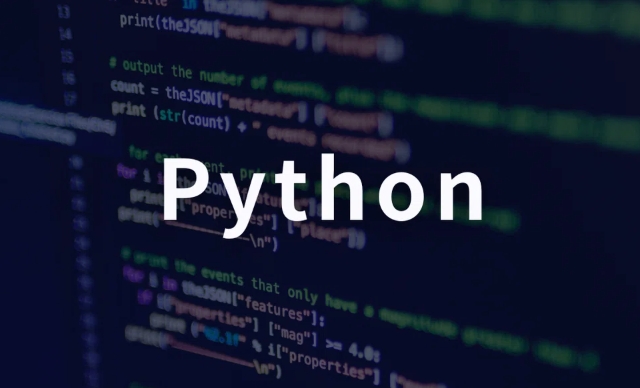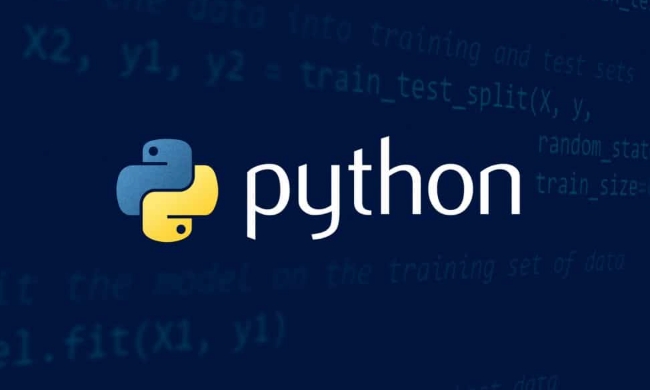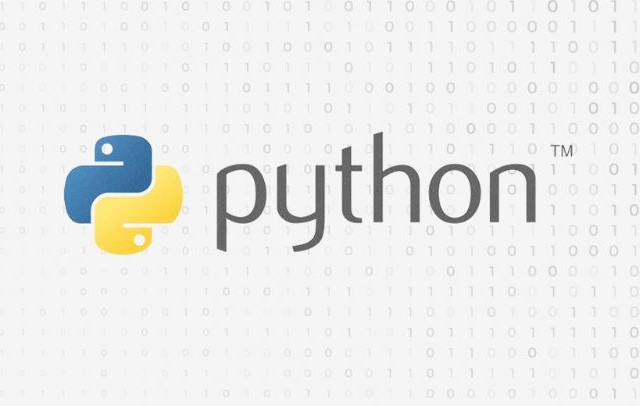The core methods of Python's processing of dates and times include parsing and formatting, calculating time differences and processing time zones. 1. Use datetime.strptime() to parse the string into a datetime object, and use strftime() to convert the string back to the string in format code such as %Y%m%d; 2. Calculate the time difference between the two datetime objects through timedelta, supports accessing attributes such as .days.seconds, and can also add and subtract time units such as timedelta(days=7); 3. The default datetime has no time zone information, and you can use the built-in zoneinfo module in Python 3.9 to add time zones such as .replace(tzinfo=ZoneInfo("America/New_York")). It is recommended to convert cross-region events to UTC time first to avoid daylight saving time problems.

Working with dates and times in Python is pretty straightforward thanks to built-in modules like datetime and time . If you've ever struggled with date formatting, time zones, or calculating durations, Python has tools that make handling these tasks easier than you might think.

Parsing and Formatting Dates
One of the most common tasks is converting between strings and datetime objects. For example, if you get a date from a file or user input like "2024-03-15" , you'll want to parse it into something you can work with.
You can use datetime.strptime() for parsing and strftime() for formatting:

from datetime import datetime
# Parsing a string into a datetime object
date_str = "2024-03-15"
date_obj = datetime.strptime(date_str, "%Y-%m-%d")
# Formatting back to a string
formatted = date_obj.strftime("%B %d, %Y")
print(formatted) # March 15, 2024 The format codes like %Y (year), %m (month), and %d (day) are key here — and they're easy to mix and match depending on your input format.
Some common ones:

-
%H: hour (00–23) -
%M: minute (00–59) -
%S: second (00–59) -
%A: full weekday name -
%a: abbreviated weekday name
Calculating Time Differences
If you need to calculate how much time is between two moments — say, how many days until an event — timedelta is your friend. It represents a duration, not a specific point in time.
Here's how you can calculate the number of days between two dates:
from datetime import datetime start = datetime(2024, 3, 10) end = datetime(2024, 3, 15) diff = end - start print(diff.days) # Output: 5
This subtraction gives you a timedelta object, and you can access .days , .seconds , or even total seconds via .total_seconds() .
It's also useful for adding or subtracting time:
- Add 7 days to a date:
some_date timedelta(days=7) - Subtract 3 hours:
some_datetime - timedelta(hours=3)
Handling Time Zones
By default, Python's datetime doesn't include time zone information — but you can add it using libraries like pytz or Python 3.9 's built-in zoneinfo .
Using zoneinfo (no extra install needed in Python 3.9):
from datetime import datetime
from zoneinfo import ZoneInfo
naive = datetime(2024, 3, 15, 12, 0) # No timezone info
aware = naive.replace(tzinfo=ZoneInfo("America/New_York"))
print(aware)Time zones matter when dealing with events across regions — especially when converting between local and UTC time. UTC is often used as a baseline because it avoids daylight saving issues.
If you're storing timestamps in a database or sending data across systems, always consider normalizing to UTC first.
That's the core of working with dates and times in Python. These tools cover most everyday needs — parsing, formatting, calculating differences, and managing time zones. There are more advanced options like pandas or third-party libraries such as arrow or pendulum , but for many projects, the standard library is enough.
Basically that's it.
The above is the detailed content of How do you work with dates and times in Python?. For more information, please follow other related articles on the PHP Chinese website!

Hot AI Tools

Undress AI Tool
Undress images for free

Undresser.AI Undress
AI-powered app for creating realistic nude photos

AI Clothes Remover
Online AI tool for removing clothes from photos.

Clothoff.io
AI clothes remover

Video Face Swap
Swap faces in any video effortlessly with our completely free AI face swap tool!

Hot Article

Hot Tools

Notepad++7.3.1
Easy-to-use and free code editor

SublimeText3 Chinese version
Chinese version, very easy to use

Zend Studio 13.0.1
Powerful PHP integrated development environment

Dreamweaver CS6
Visual web development tools

SublimeText3 Mac version
God-level code editing software (SublimeText3)

Hot Topics
 What are some common security vulnerabilities in Python web applications (e.g., XSS, SQL injection) and how can they be mitigated?
Jun 10, 2025 am 12:13 AM
What are some common security vulnerabilities in Python web applications (e.g., XSS, SQL injection) and how can they be mitigated?
Jun 10, 2025 am 12:13 AM
Web application security needs to be paid attention to. Common vulnerabilities on Python websites include XSS, SQL injection, CSRF and file upload risks. For XSS, the template engine should be used to automatically escape, filter rich text HTML and set CSP policies; to prevent SQL injection, parameterized query or ORM framework, and verify user input; to prevent CSRF, CSRFTToken mechanism must be enabled and sensitive operations must be confirmed twice; file upload vulnerabilities must be used to restrict types, rename files, and prohibit execution permissions. Following the norms and using mature tools can effectively reduce risks, and safety needs continuous attention and testing.
 How does Python's unittest or pytest framework facilitate automated testing?
Jun 19, 2025 am 01:10 AM
How does Python's unittest or pytest framework facilitate automated testing?
Jun 19, 2025 am 01:10 AM
Python's unittest and pytest are two widely used testing frameworks that simplify the writing, organizing and running of automated tests. 1. Both support automatic discovery of test cases and provide a clear test structure: unittest defines tests by inheriting the TestCase class and starting with test\_; pytest is more concise, just need a function starting with test\_. 2. They all have built-in assertion support: unittest provides assertEqual, assertTrue and other methods, while pytest uses an enhanced assert statement to automatically display the failure details. 3. All have mechanisms for handling test preparation and cleaning: un
 How does Python handle mutable default arguments in functions, and why can this be problematic?
Jun 14, 2025 am 12:27 AM
How does Python handle mutable default arguments in functions, and why can this be problematic?
Jun 14, 2025 am 12:27 AM
Python's default parameters are only initialized once when defined. If mutable objects (such as lists or dictionaries) are used as default parameters, unexpected behavior may be caused. For example, when using an empty list as the default parameter, multiple calls to the function will reuse the same list instead of generating a new list each time. Problems caused by this behavior include: 1. Unexpected sharing of data between function calls; 2. The results of subsequent calls are affected by previous calls, increasing the difficulty of debugging; 3. It causes logical errors and is difficult to detect; 4. It is easy to confuse both novice and experienced developers. To avoid problems, the best practice is to set the default value to None and create a new object inside the function, such as using my_list=None instead of my_list=[] and initially in the function
 What are the considerations for deploying Python applications to production environments?
Jun 10, 2025 am 12:14 AM
What are the considerations for deploying Python applications to production environments?
Jun 10, 2025 am 12:14 AM
Deploying Python applications to production environments requires attention to stability, security and maintenance. First, use Gunicorn or uWSGI to replace the development server to support concurrent processing; second, cooperate with Nginx as a reverse proxy to improve performance; third, configure the number of processes according to the number of CPU cores to optimize resources; fourth, use a virtual environment to isolate dependencies and freeze versions to ensure consistency; fifth, enable detailed logs, integrate monitoring systems, and set up alarm mechanisms to facilitate operation and maintenance; sixth, avoid root permissions to run applications, close debugging information, and configure HTTPS to ensure security; finally, automatic deployment is achieved through CI/CD tools to reduce human errors.
 How can Python be integrated with other languages or systems in a microservices architecture?
Jun 14, 2025 am 12:25 AM
How can Python be integrated with other languages or systems in a microservices architecture?
Jun 14, 2025 am 12:25 AM
Python works well with other languages ??and systems in microservice architecture, the key is how each service runs independently and communicates effectively. 1. Using standard APIs and communication protocols (such as HTTP, REST, gRPC), Python builds APIs through frameworks such as Flask and FastAPI, and uses requests or httpx to call other language services; 2. Using message brokers (such as Kafka, RabbitMQ, Redis) to realize asynchronous communication, Python services can publish messages for other language consumers to process, improving system decoupling, scalability and fault tolerance; 3. Expand or embed other language runtimes (such as Jython) through C/C to achieve implementation
 How can Python be used for data analysis and manipulation with libraries like NumPy and Pandas?
Jun 19, 2025 am 01:04 AM
How can Python be used for data analysis and manipulation with libraries like NumPy and Pandas?
Jun 19, 2025 am 01:04 AM
PythonisidealfordataanalysisduetoNumPyandPandas.1)NumPyexcelsatnumericalcomputationswithfast,multi-dimensionalarraysandvectorizedoperationslikenp.sqrt().2)PandashandlesstructureddatawithSeriesandDataFrames,supportingtaskslikeloading,cleaning,filterin
 How can you implement custom iterators in Python using __iter__ and __next__?
Jun 19, 2025 am 01:12 AM
How can you implement custom iterators in Python using __iter__ and __next__?
Jun 19, 2025 am 01:12 AM
To implement a custom iterator, you need to define the __iter__ and __next__ methods in the class. ① The __iter__ method returns the iterator object itself, usually self, to be compatible with iterative environments such as for loops; ② The __next__ method controls the value of each iteration, returns the next element in the sequence, and when there are no more items, StopIteration exception should be thrown; ③ The status must be tracked correctly and the termination conditions must be set to avoid infinite loops; ④ Complex logic such as file line filtering, and pay attention to resource cleaning and memory management; ⑤ For simple logic, you can consider using the generator function yield instead, but you need to choose a suitable method based on the specific scenario.
 How do list, dictionary, and set comprehensions improve code readability and conciseness in Python?
Jun 14, 2025 am 12:31 AM
How do list, dictionary, and set comprehensions improve code readability and conciseness in Python?
Jun 14, 2025 am 12:31 AM
Python's list, dictionary and collection derivation improves code readability and writing efficiency through concise syntax. They are suitable for simplifying iteration and conversion operations, such as replacing multi-line loops with single-line code to implement element transformation or filtering. 1. List comprehensions such as [x2forxinrange(10)] can directly generate square sequences; 2. Dictionary comprehensions such as {x:x2forxinrange(5)} clearly express key-value mapping; 3. Conditional filtering such as [xforxinnumbersifx%2==0] makes the filtering logic more intuitive; 4. Complex conditions can also be embedded, such as combining multi-condition filtering or ternary expressions; but excessive nesting or side-effect operations should be avoided to avoid reducing maintainability. The rational use of derivation can reduce






